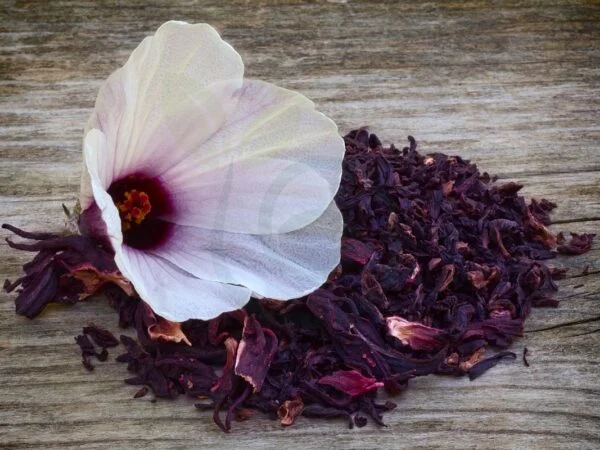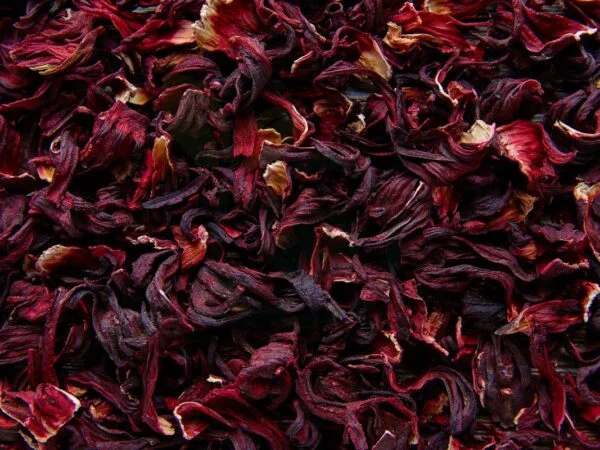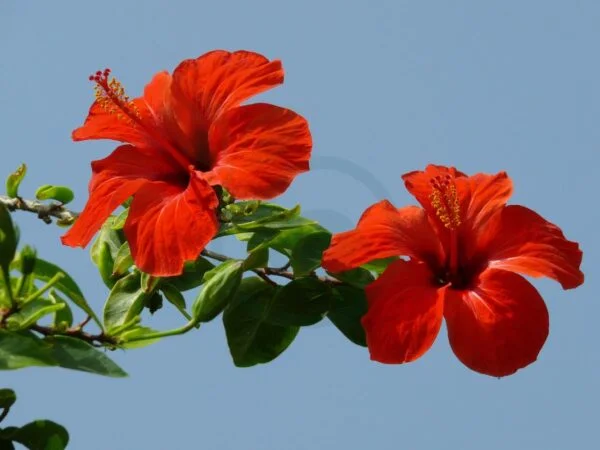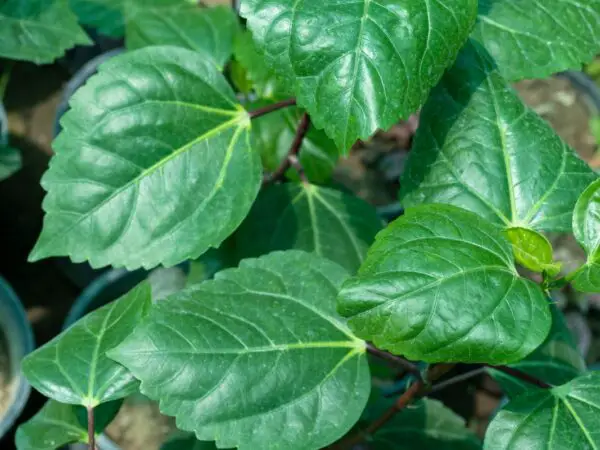Wondering what is eating your hibiscus leaves? You're not alone in this foliage mystery. Let's delve into the world of garden pests like grasshoppers, sawflies, moths, and other critters to uncover the culprits behind those nibbled leaves.
Key Takeaways
-
Identify the Culprits: Learn to recognize common pests like sawflies, grasshoppers, and moths that feed on hibiscus leaves in your shrub to take appropriate action promptly.
-
Combatting Common Eaters: Be aware of typical insects like aphids, caterpillars, grasshoppers, and moths that may be harming your hibiscus plants.
-
Effective Control Methods: Implement proven pest control strategies such as natural predators or insecticidal soaps to safeguard your hibiscus.
-
DIY Solutions: Explore homemade remedies like neem oil sprays or garlic water to manage pests without harsh chemicals.
-
Seek Professional Assistance: Consider consulting with pest control experts for severe infestations that DIY methods cannot handle effectively.
-
Preventative Measures: Embrace proactive steps like regular inspection and pruning to keep pests at bay and maintain healthy hibiscus plants.
Identifying Pests
Common Insects
To identify common insects that eat hibiscus leaves, look out for aphids, small pear-shaped bugs that cluster on new growth. Another culprit is the hibiscus sawfly, with larvae resembling caterpillars but are actually wasp larvae. Watch for Japanese beetles, metallic green pests that feast on foliage.
Understanding the characteristics of each insect is crucial. For instance, aphids are tiny and come in various colors like green or black. Hibiscus sawflies have a distinct light green color with stripes, while Japanese beetles are easily recognizable due to their metallic green bodies.
Differentiating between these insects involves closely inspecting the leaves and stems. Look for clusters of aphids or chewed edges caused by hibiscus sawfly larvae. Japanese beetles leave behind skeletonized leaves due to their feeding habits.
Leaf Damage Signs
Recognizing signs of leaf damage on hibiscus plants is vital for effective pest control. Look for holes in the leaves caused by chewing insects like caterpillars or beetles. Yellowing or wilting leaves may indicate sucking pests such as aphids or spider mites.
Understanding the implications of various types of leaf damage helps in determining the appropriate treatment. Holes can lead to reduced photosynthesis and stunted growth, while yellowing leaves affect nutrient absorption and overall plant health.
Distinguishing between damage caused by different pests requires careful observation. Holes with dark excrement nearby suggest caterpillar feeding, while stippling (tiny white dots) indicates spider mite infestation.
Hibiscus Specific Pests
Exploring pests specific to hibiscus plants reveals thrips, tiny insects that cause silvering on leaves, and whiteflies, which suck sap from plants. These pests weaken the plant over time if left unchecked.
Understanding the behavior and impact of these pests on hibiscus leaves is essential. Thrips feed in groups, leaving behind silvery streaks on leaves, while whiteflies cause yellowing and leaf drop due to sap extraction.
Implementing targeted strategies to control hibiscus-specific pests involves using insecticidal soap for thrips and introducing natural predators like ladybugs for whiteflies. Regularly inspecting plants can help catch infestations early before significant damage occurs.
Common Hibiscus Eaters
Aphids
Aphids are common pests that love hibiscus plants. These tiny insects can cause significant damage by sucking sap from the leaves, leading to wilting and yellowing. To manage aphid infestations, consider using natural predators like ladybugs or spraying a mixture of water and mild soap.
Spider Mites
Spider mites, another pest that loves hibiscus, are barely visible to the naked eye but can cause webbing on leaves, leading to discoloration and stunted growth. To combat spider mites, try pruning affected leaves, increasing humidity levels, or using insecticidal soap.
Whiteflies
Whiteflies pose a threat to hibiscus plants by feeding on the sap of the leaves, causing them to turn yellow and eventually drop off. To prevent whitefly infestations, consider using yellow sticky traps or introducing natural predators like parasitic wasps.
Caterpillars
Caterpillars are leaf-eating pests that can quickly defoliate hibiscus plants if left unchecked. Signs of caterpillar infestation include chewed leaves and visible caterpillars on the plant. To manage caterpillars, manually remove them from the plant or use organic insecticides like neem oil.
Effective Pest Control
Natural remedies are effective in controlling pests on hibiscus plants. Pyrethrum, garlic, and onion sprays are popular natural options. Regular application is key to their success.
Chemical Solutions
Chemical solutions are effective for combating pests on hibiscus plants. They offer a potent way to control pest infestations. Follow safety guidelines when using chemical treatments.
Biological methods involve beneficial insects that aid in pest management on hibiscus plants. These insects help control pest populations naturally. Integrate biological control methods into your hibiscus plant care routine.
DIY Pest Solutions
Neem Oil
Neem oil is a natural and effective solution for controlling pests on hibiscus plants. It acts as a repellent, disrupts the insect's life cycle, and reduces feeding. Applying neem oil regularly can help prevent infestations. To use neem oil, mix it with water according to the instructions on the product label. Spray the solution evenly on both sides of the hibiscus leaves, focusing on areas where pests are present. Neem oil should be applied every 7-14 days for best results.
Soap Spray
p spray is another simple yet powerful method for managing pests on hibiscus plants. It works by suffocating insects like aphids, spider mites, and whiteflies. To prepare soap spray, mix mild liquid soap with water in a spray bottle. Shake well before applying to ensure proper mixing. Spray the solution directly onto affected hibiscus leaves, covering all surfaces thoroughly. Repeat the application every 5-7 days until pests are under control.
Beneficial Insects
Beneficial insects play a crucial role in maintaining a healthy balance in your hibiscus garden ecosystem. Ladybugs, lacewings, and parasitic wasps are examples of beneficial insects that feed on common hibiscus pests like aphids and caterpillars. To attract these helpful bugs, avoid using broad-spectrum insecticides that harm them. Planting diverse flowers and herbs can provide nectar sources to encourage beneficial insect populations to thrive in your garden.
Professional Help
When to Call
Pest infestations on hibiscus plants can be a problem that DIY solutions might not fully address. Look for severe damage like chewed leaves or wilting flowers as warning signs. Calling for professional help is crucial if the infestation persists despite your efforts.
Professional services can order specialized treatments to eradicate pests effectively. They have the yall and expertise to identify the root cause of the issue and provide targeted solutions. Timely intervention from pest control experts can prevent further damage to your hibiscus plants.
Choosing a Service
Selecting a reputable pest control service is essential for effective pest management on hibiscus plants. Consider factors such as the service provider's reputation, experience, and methods used for pest control. Look for certifications and licenses that demonstrate their credibility in handling plant pests.
When choosing a service, ensure they use environmentally friendly methods to protect your hibiscus plants and the surrounding ecosystem. Evaluate their expertise by asking about their previous experience with treating hibiscus plant infestations. A reliable service will offer guarantees on their work and provide ongoing support if needed.
Preventing Pest Problems
Regular Maintenance
Regular maintenance plays a crucial role in keeping hibiscus plants healthy and pest-free. By consistently caring for your plants, you can prevent common pest problems. Implementing practices such as regular watering, proper fertilization, and pruning helps maintain the plant's overall health. These actions also promote the plant's resilience against pests.
-
Regular maintenance is key to preventing pest infestations.
-
Essential practices include proper watering, fertilization, and pruning.
-
Consistent care can deter pests and ensure the longevity of hibiscus plants.
Healthy Plant Practices
Adopting healthy plant practices is essential for fostering pest resistance in hibiscus plants. Proper watering techniques ensure that the plant receives adequate moisture without becoming susceptible to pests. Correct fertilization methods provide essential nutrients for the plant's growth while maintaining its strength against invaders.
-
Healthy plant practices contribute to pest resistance.
-
Proper watering, fertilization, and pruning techniques are crucial.
-
Minimize pest damage by following healthy plant practices.
Monitoring & Early Detection
Monitoring your hibiscus plants regularly is vital for early detection of any potential pest issues. By inspecting the leaves, stems, and flowers frequently, you can identify signs of pest activity promptly. Early intervention is key to preventing severe infestations that could harm your plants.
-
Monitoring and early detection are crucial in pest management.
-
Inspect hibiscus plants regularly for signs of pests.
-
Take proactive measures to address pest issues promptly.
Future Prevention Tips
Resistant Varieties
Hibiscus enthusiasts can opt for resistant varieties like the "Texas Star" or "Brilliant." These cultivars boast natural defenses against common pests. By choosing these hibiscus types, gardeners can minimize the need for intensive pest control methods. The benefits of planting resistant varieties include healthier plants and reduced reliance on chemical treatments.
When selecting hibiscus plants, look for features such as thick leaves and strong stems, which indicate resistance to pests. By incorporating resistant varieties into your garden, you create a natural barrier against infestations. This proactive approach not only safeguards your hibiscus plants but also promotes a thriving garden ecosystem.
Companion Planting
Harness the power of companion planting to bolster your hibiscus's defense system. Plants like marigolds, lavender, or basil act as natural repellents against common pests. By strategically placing these companion plants near your hibiscus, you deter unwanted insects effectively. This symbiotic relationship fosters a harmonious garden environment and enhances pest management efforts.
Companion planting is a time-honored technique that leverages the unique properties of different plant species to protect crops naturally. For example, marigolds emit a scent that repels harmful insects while attracting beneficial ones. Embracing this holistic approach not only safeguards your hibiscus but also adds diversity and beauty to your garden landscape.
Sanitation Practices
Maintaining proper sanitation practices is key to preventing pest infestations in hibiscus gardens. Regularly remove fallen leaves and debris around your plants to eliminate potential breeding grounds for pests. By keeping your garden clean and tidy, you disrupt the lifecycle of many common hibiscus pests, reducing their numbers significantly.
Practicing good garden hygiene involves inspecting your plants regularly for signs of disease or pest activity. Promptly addressing any issues you encounter can prevent small problems from escalating into full-blown infestations. Remember, a clean garden is a healthy garden – prioritize sanitation to ensure your hibiscus thrives without unwanted visitors.
Community Insights
Forum Discussions
Engage in forum discussions to seek advice and solutions for hibiscus pest problems. Connect with a community of fellow gardeners facing similar issues. Share your challenges and learn from the experiences and insights shared by others.
Participate actively in online forums dedicated to gardening to exchange ideas and strategies for effective pest management. Utilize the collective wisdom of experienced gardeners who have successfully dealt with hibiscus leaf-eating pests.
Expert Advice
Seek expert advice from horticulturists or entomologists specializing in pest control. These professionals can provide tailored solutions for specific pest issues, guiding you on the most effective ways to protect your hibiscus plants.
Understand the value of expert guidance in implementing effective pest management practices. By consulting with experts, you can gain valuable knowledge on identifying, preventing, and treating common hibiscus leaf-eating pests.
Additional Resources
Online Guides
Seek online guides for detailed information on controlling pests that are damaging your hibiscus leaves. Access tips, troubleshooting advice, and step-by-step instructions to effectively manage these pests. Explore various reputable websites and platforms dedicated to providing reliable guidance on hibiscus care.
Local Workshops
Participate in local workshops and events that focus on caring for hibiscus plants and managing pests effectively. Learn practical, hands-on techniques and strategies for ensuring the health of your hibiscus plants. Engage with local gardening communities to share knowledge, experiences, and effective pest control methods.
Summary
In conclusion, identifying the pests munching on your hibiscus leaves is the first step to safeguarding your plants. Understanding the common culprits and implementing effective pest control measures can help you combat these intruders successfully. Whether you opt for DIY solutions or seek professional assistance, taking proactive steps is key to preserving the health and beauty of your hibiscus plants. By following the prevention tips shared here and leveraging community insights and additional resources, you can create a thriving environment for your beloved hibiscus plants.
Take charge of protecting your hibiscus plants today by implementing the strategies discussed. Remember, a little effort now can go a long way in ensuring your hibiscus blooms vibrantly for seasons to come.
Frequently Asked Questions
What are some common pests that eat hibiscus leaves?
The most common pests that eat hibiscus leaves include aphids, caterpillars, whiteflies, and spider mites. These pests can cause significant damage to your hibiscus plants if not addressed promptly.
How can I effectively control pests eating my hibiscus leaves?
Effective pest control methods for hibiscus include using insecticidal soap, neem oil, or introducing beneficial insects like ladybugs. Regular inspection of your plants and prompt action upon noticing pests are essential for successful pest control.
Are there any DIY solutions to prevent pests from eating my hibiscus leaves?
You can create DIY solutions like a garlic spray or a mixture of water and dish soap to deter pests from attacking your hibiscus leaves. These natural remedies are eco-friendly and can help protect your plants without harsh chemicals.
When should I seek professional help for pest infestations on my hibiscus plants?
If DIY methods fail to control the pest infestation on your hibiscus plants or if the problem persists and worsens, it is advisable to seek professional help. Pest control experts can assess the situation accurately and provide targeted solutions.
What are some tips for preventing future pest problems on my hibiscus plants?
To prevent future pest problems, maintain good plant hygiene by removing debris, regularly inspecting for pests, avoiding over-fertilization, and providing adequate airflow around your hibiscus plants. Implementing these practices can help keep your plants healthy and pest-free.
Image Source: Paid image from CANVA




